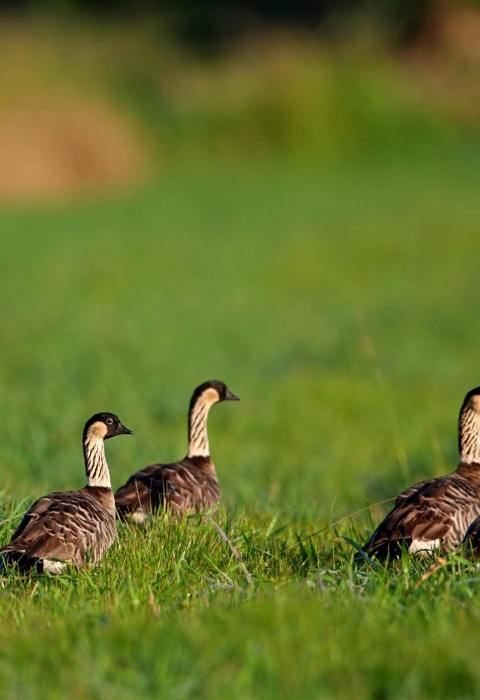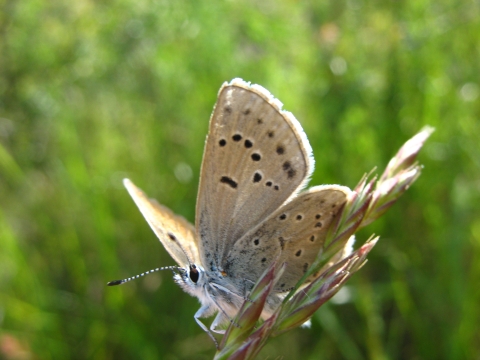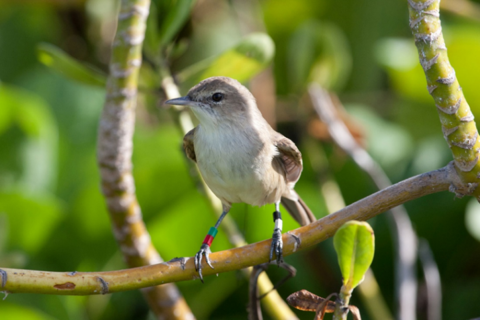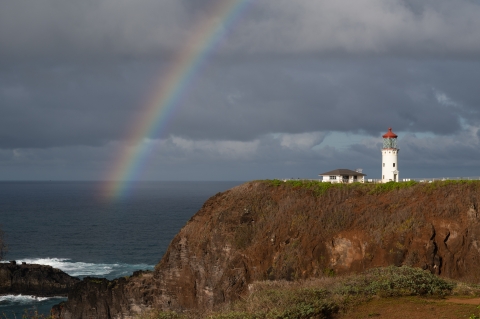From tropical rainforests and sandy beaches on Pacific Islands to the sagebrush sagebrush
The western United States’ sagebrush country encompasses over 175 million acres of public and private lands. The sagebrush landscape provides many benefits to our rural economies and communities, and it serves as crucial habitat for a diversity of wildlife, including the iconic greater sage-grouse and over 350 other species.
Learn more about sagebrush deserts and mountain peaks in the Pacific Northwest, we are privileged to protect some of the most varied landscapes and wildlife on Earth.
Those special places and species, however, each bring their own challenge. Thankfully, we’ve had the Endangered Species Act to help us manage those species and landscapes over the past 50 years and into the future.
Our Pacific Region – which encompasses Idaho, Oregon, Washington, Hawaii and the Pacific Islands – has more than 35% of ESA-listed species. With 589 plants and animals listed as threatened or endangered in the region, we face this challenge on a daily basis.
Fortunately, we also have some of the most dedicated professionals who are up to this conservation challenge as we work with a network of Tribes, state, local and federal agencies, and partners from every segment of our society.
In the Pacific Region, we have recovered the Oregon chub, the first fish delisted due to recovery, and we’ve downlisted the ‘Io (Hawaiian hawk). We have been a part of national conservation efforts for species such as bald eagles, peregrine falcons and many others species.
We continue to work collaboratively, using science to support the conservation of listed species such as the threatened bull trout, and work with Tribes, states, and partner agencies in the management of listed salmon in the Pacific Northwest. Internally, our National Wildlife Refuges are islands of conservation, playing an essential role in the recovery of many threatened and endangered species.
There are numerous lessons to be learned from the remarkable work being done in the Pacific Region. Here are just a few examples of our successes and ongoing challenges in Idaho, Oregon, Washington, Hawai’i, and the Pacific Islands.
Idaho
Success: MacFarlane's 4-o'clock is a threatened plant that occurs in only three populations in the river canyons between Idaho and Oregon. For several decades, we have been working with partners at the Bureau of Land Management and in academia to protect this plant. Recently, botanists used a technique called micropropagation to grow several thousand plants to give existing populations a boost and to create two new populations.
Challenge: The Banbury Springs limpet is an endangered freshwater snail found in only a few south-central Idaho springs. This species is on the brink of extinction, and Service biologists have partnered with the University of Idaho to learn more about whether captive propagation will help this species. Rocks with Banbury Springs limpets attached were carefully moved to the University of Idaho Fish Culture Experimental Station near Hagerman, Idaho, where spring-fed aquariums were waiting. By rearing a captive population, we can learn more about this species and its needs without impacting the parent population or habitat. Early information reveals they are doing well in captivity!
Oregon
Success: The Service is making great progress in recovering prairie species in Oregon’s Willamette Valley through innovative partnerships and cross-program collaboration. We delisted Bradshaw’s lomatium, reclassified Fender’s blue butterfly from endangered to threatened, and two prairie plants – Nelson's checker-mallow and golden paintbrush – have been proposed for delisting. A key factor in this success is the ability to share and leverage resources with our partners and carry out recovery efforts that benefit a suite of species in the same ecosystem.
Challenges: Northern spotted owl populations are in serious decline due to competition from the invasive barred owl, along with past and ongoing habitat loss. The Service is developing a Barred Owl Management Strategy that could be implemented by Tribes, and federal or state agencies. The strategy will include actions to reduce barred owl populations and therefore reduce their competitive exclusion of federally listed northern spotted owl. It will also focus on limiting barred owl expansion into the range of the California spotted owl before the invasive bird becomes more established.
Washington
Success: When listed as threatened in 1997, there were only 10 known populations of golden paintbrush in the Pacific Northwest, consisting of fewer than 20,000 plants. Thanks to the efforts of diverse conservation partners, the species has now rebounded to over 325,000 plants at 48 locations. The recovery is a testament to the importance of partner collaboration and coordination.
Challenge: Climate change is expected to significantly diminish the alpine habitat upon which the Mount Rainier white-tailed ptarmigan depends. This proposed listing reflects the growing extinction crisis due to climate change climate change
Climate change includes both global warming driven by human-induced emissions of greenhouse gases and the resulting large-scale shifts in weather patterns. Though there have been previous periods of climatic change, since the mid-20th century humans have had an unprecedented impact on Earth's climate system and caused change on a global scale.
Learn more about climate change and highlights the importance of the ESA and efforts to conserve species before population declines become irreversible. The listing of Mount Rainier white-tailed ptarmigan serves as an alarm bell but also a call to action.
Hawai‘i and Pacific Islands
Success: Found only on the tiny, uninhabited island of Nihoa, the ulūlu (Nihoa millerbird) was on the verge of extinction. Its population was so small, scientists were worried that a single hurricane or accidental introduction of an invasive predator would wipe the species off the map. With intensifying hurricanes in the Pacific and an invasive grasshopper outbreak that decimated island vegetation and threatened habitat, the ulūlu had a lot working against them. In partnership with the Papahānaumokuākea Marine National Monument, the Office of Hawaiian Affairs, and the American Bird Conservancy, the Service successfully increased the population of ulūlu via feeding and breeding on the island of Laysan.
Challenge: Hawai‘i forest birds are facing an immediate extinction crisis. Avian malaria, a disease transmitted by invasive mosquitoes, is driving the extinction of Hawai‘i forest birds and for some species a single bite from an infected mosquito can be deadly. Once, there were more than 50 species of honeycreepers spread throughout Hawai‘i; today only 17 species remain, most of which are restricted to small habitats too cold for mosquitoes to thrive. A few species, such as the kiwikiu and ‘akikiki, have less than 200 individuals remaining in the wild and could go extinct in as little as two years. As climate change accelerates, mosquitoes are expanding their range into upper elevation forests, threatening what little safe habitat these birds have left.
The Service is working with the State of Hawai‘i and other partners to use conservation tools such as captive care and translocation to prevent forest bird extinctions while simultaneously pursuing a long-term option for landscape-scale mosquito control. The Service and partners are using a $14 million investment through the Bipartisan Investment Act and other appropriations for this essential work.
Looking back over the course of 50 years of the ESA, there are many lessons learned, strong partnerships nurtured and sustained, and numerous recovery victories attained. It is reassuring and affirming to reflect on our shared successes. Yet we all know there is still a lot of work ahead of us. As we look to the next 50 years and beyond, an ongoing commitment to species conservation and the ESA is vital. We will need the continued engagement of all Service programs and strong partnerships to ensure the success of the ESA so future generations may experience the natural heritage we all cherish.
Thank you for joining in celebrating the lessons and successes of the past 50 years, and for your contributions to the next 50 years. The success of the ESA needs us all!






